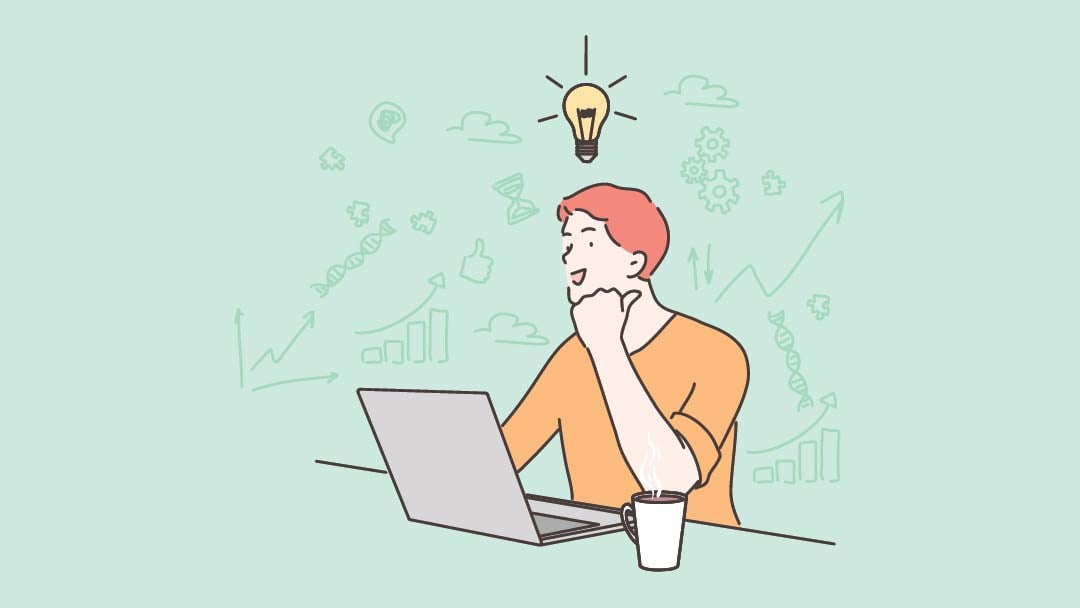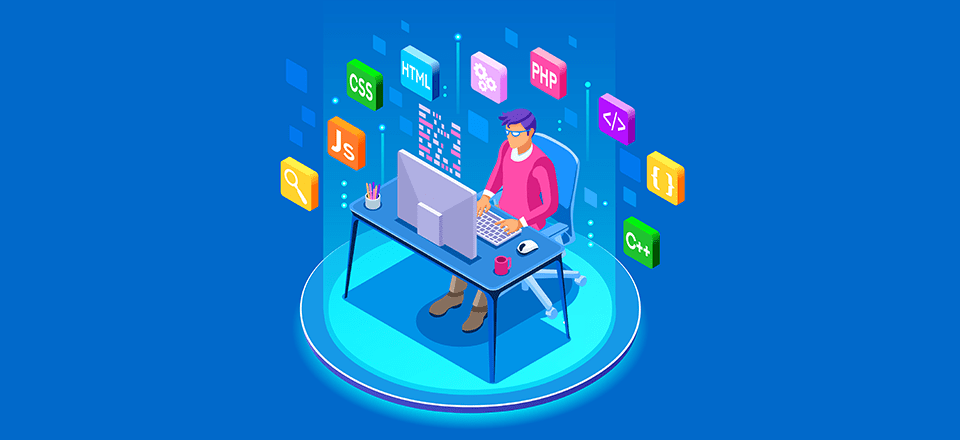All Categories
Featured
Table of Contents
- – Web Page Design: A Comprehensive Guide - Adobe...
- – Wicky Design: Philadelphia Web Design Tips an...
- – 34 Of The Best Website Designs To Inspire You...
- – The Top Ecommerce, Website Design ... - Seatt...
- – Web Design Services + Website Development Age...
- – Figma: The Collaborative Interface Design Too...
- – The Top Ecommerce, Website Design ... - Seat...
- – Web Development Bachelor's Degree - Full Sai...
- – Html Responsive Web Design - W3schools Tips ...
- – Web Design Studio & Digital Marketing Agency...
- – Web Design Company In Orlando, Florida And B...
Web Page Design: A Comprehensive Guide - Adobe Xd Ideas Tips and Tricks:
Quick summary Use and the utility, not the visual style, determine the success or failure of a site. Given that the visitor of the page is the only person who clicks the mouse and therefore chooses everything, user-centric design has actually established as a standard method for effective and profit-oriented web style - web design frederick md.
and the utility, not the visual style, determine the success or failure of a website. Because the visitor of the page is the only individual who clicks the mouse and therefore decides whatever, user-centric design has actually become a standard technique for effective and profit-oriented web style. If users can't utilize a feature, it may as well not exist.
g. where the search box must be placed) as it has actually already been carried out in a variety of short articles; rather we focus on the techniques which, used properly, can lead to more sophisticated design choices and streamline the process of viewing presented details. Please observe that you may be thinking about the usability-related short articles we've released prior to: Principles Of Great Website Design And Efficient Web Design Guidelines, In order to utilize the principles properly we first require to comprehend how users interact with sites, how they believe and what are the basic patterns of users' behavior.
Wicky Design: Philadelphia Web Design Tips and Tricks:
Visitors look at each new page, scan a few of the text, and click the very first link that catches their interest or slightly looks like the important things they're looking for. There are large parts of the page they do not even look at. Most users search for something interesting (or beneficial) and clickable; as quickly as some promising candidates are discovered, users click.
If a page supplies users with top quality material, they are ready to jeopardize the content with ads and the design of the site. This is the reason why not-that-well-designed websites with premium material acquire a great deal of traffic over years. Content is more crucial than the style which supports it.

Extremely basic principle: If a website isn't able to meet users' expectations, then designer stopped working to get his job done correctly and the business loses cash. The higher is the cognitive load and the less user-friendly is the navigation, the more ready are users to leave the website and search for alternatives.
34 Of The Best Website Designs To Inspire You In 2022 Tips and Tricks:
Neither do they scan web page in a linear fashion, going sequentially from one site section to another one. Rather users satisfice; they pick the very first reasonable alternative. As quickly as they find a link that appears like it might lead to the goal, there is a very good possibility that it will be instantly clicked.
It doesn't matter to us if we comprehend how things work, as long as we can use them. If your audience is going to imitate you're designing signboard, then design fantastic signboards." Users wish to have the ability to control their browser and rely on the consistent information presentation throughout the site.
If the navigation and site architecture aren't intuitive, the number of question marks grows and makes it harder for users to comprehend how the system works and how to get from point A to point B. A clear structure, moderate visual hints and quickly recognizable links can assist users to discover their path to their aim.
The Top Ecommerce, Website Design ... - Seattle Tips and Tricks:

Since users tend to explore sites according to the "F"-pattern, these 3 declarations would be the very first components users will see on the page once it is filled. The design itself is easy and instinctive, to understand what the page is about the user needs to browse for the answer.
As soon as you have actually attained this, you can communicate why the system is beneficial and how users can benefit from it. Don't Misuse Users' Perseverance, In every task when you are going to use your visitors some service or tool, attempt to keep your user requirements very little.
Novice visitors are willing to, not filling long web kinds for an account they might never ever use in the future. Let users explore the site and discover your services without requiring them into sharing personal information. It's not sensible to force users to go into an e-mail address to test the feature.
Web Design Services + Website Development Agency Tips and Tricks:
And that's what you desire your users to feel on your web site. The registration can be done in less than 30 seconds as the form has horizontal orientation, the user doesn't even need to scroll the page.
A user registration alone is enough of an obstacle to user navigation to cut down on inbound traffic. Manage To Focus Users' Attention, As websites supply both fixed and dynamic content, some elements of the user interface bring in attention more than others do.
Focusing users' attention to specific areas of the website with a moderate use of visual aspects can assist your visitors to get from point A to point B without thinking about how it actually is expected to be done. The less concern marks visitors have, the they have and the more trust they can establish towards the company the site represents.
Figma: The Collaborative Interface Design Tool. Tips and Tricks:
4. Strive For Function Direct exposure, Modern web designs are normally slammed due to their method of assisting users with aesthetically appealing 1-2-3-done-steps, big buttons with visual impacts and so on. But from the design perspective these elements actually aren't a bad thing. On the contrary, such as they lead the visitors through the site material in a very basic and easy to use method.
The site has 9 primary navigation options which are noticeable at the first glance. The choice of colors may be too light, though. is a basic principle of effective user interface style. It doesn't truly matter how this is achieved. What matters is that the content is well-understood and visitors feel comfortable with the method they communicate with the system.
Instead a rate: simply what visitors are looking for. An optimal option for efficient writing is touse brief and succinct expressions (come to the point as quickly as possible), usage scannable design (categorize the content, utilize multiple heading levels, utilize visual components and bulleted lists which break the circulation of consistent text blocks), usage plain and unbiased language (a promotion does not need to sound like ad; provide your users some sensible and unbiased reason why they ought to utilize your service or stay on your website)6.
The Top Ecommerce, Website Design ... - Seattle Tips and Tricks:
Users are hardly ever on a website to delight in the style; in addition, for the most part they are trying to find the information regardless of the style - web design frederick md. Pursue simplicity rather of complexity. From the visitors' viewpoint, the best website style is a pure text, without any advertisements or further content obstructs matching precisely the query visitors used or the material they have actually been searching for.
Finch clearly presents the information about the website and provides visitors an option of choices without overcrowding them with unnecessary content. Not only does it help to for the visitors, but it makes it possible to view the details provided on the screen.
Complex structures are harder to read, scan, evaluate and work with. If you have the choice between separating 2 design segments by a noticeable line or by some whitespace, it's generally better to use the whitespace solution. (Simon's Law): the better you manage to provide users with a sense of visual hierarchy, the easier your content will be to view.
Web Development Bachelor's Degree - Full Sail University Tips and Tricks:
The very same conventions and rules need to be applied to all elements.: do the most with the least amount of hints and visual aspects. 4 major points to be considered: simpleness, clearness, diversity, and emphasis. Simplicity consists of only the aspects that are crucial for interaction. Clearness: all elements ought to be designed so their meaning is not unclear.
Conventions Are Our Pals, Conventional design of site components does not lead to an uninteresting web site. In truth, as they reduce the discovering curve, the requirement to find out how things work. It would be an usability problem if all websites had different visual presentation of RSS-feeds. That's not that different from our routine life where we tend to get utilized to basic concepts of how we organize information (folders) or do shopping (positioning of items).
understand what they're anticipating from a website navigation, text structure, search positioning etc. A case in point from use sessions is to translate the page in Japanese (assuming your web users do not understand Japanese, e. g. with Babelfish) and supply your use testers with a task to discover something in the page of different language.
Html Responsive Web Design - W3schools Tips and Tricks:
Test Early, Test Frequently, This so-called TETO-principle should be used to every web style task as use tests often supply into substantial issues and problems related to a provided design. Test not too late, not too little and not for the wrong factors.
Some crucial points to keep in mind: according to Steve Krug, and screening one user early in the task is much better than testing 50 near the end. Accoring to Boehm's very first law, mistakes are most frequent during requirements and design activities and are the more expensive the later they are removed.
That implies that you develop something, test it, fix it and then test it once again. There might be issues which haven't been found during the first round as users were virtually obstructed by other problems. usability tests. Either you'll be pointed to the issues you have or you'll be indicated the absence of significant design flaws which is in both cases a beneficial insight for your project.
Web Design Studio & Digital Marketing Agency • Gravitate Tips and Tricks:

This holds for designers. After you have actually worked on a site for couple of weeks, you can't observe it from a fresh viewpoint any longer. You know how it is built and therefore you know precisely how it works you have the knowledge independent testers and visitors of your website would not have.
It can be connected to other areas such as graphic style, user experience, and multimedia arts, but is more aptly seen from a technological standpoint. It has actually become a large part of individuals's everyday lives. It is hard to think of the Internet without animated graphics, different styles of typography, background, videos and music.

During 1991 to 1993 the World Wide Web was born. Text-only pages might be viewed utilizing a simple line-mode browser. There had been no integrated method to graphic design components such as images or noises.
Web Design Company In Orlando, Florida And Bangor, Maine Tips and Tricks:
The W3C was created in October 1994 to "lead the World Wide Web to its full potential by establishing common procedures that promote its evolution and guarantee its interoperability." This discouraged any one business from monopolizing a propriety browser and shows language, which might have altered the effect of the Web as a whole.
As this has taken place the innovation of the web has actually likewise moved on. There have actually also been substantial changes in the way people use and access the web, and this has altered how sites are designed. Because the end of the internet browsers wars [] brand-new internet browsers have been launched. A number of these are open source suggesting that they tend to have faster advancement and are more supportive of brand-new standards.
Learn more about Lovell Media Group LLC or TrainACETable of Contents
- – Web Page Design: A Comprehensive Guide - Adobe...
- – Wicky Design: Philadelphia Web Design Tips an...
- – 34 Of The Best Website Designs To Inspire You...
- – The Top Ecommerce, Website Design ... - Seatt...
- – Web Design Services + Website Development Age...
- – Figma: The Collaborative Interface Design Too...
- – The Top Ecommerce, Website Design ... - Seat...
- – Web Development Bachelor's Degree - Full Sai...
- – Html Responsive Web Design - W3schools Tips ...
- – Web Design Studio & Digital Marketing Agency...
- – Web Design Company In Orlando, Florida And B...
Latest Posts
Web Design - Wikipedia Tips and Tricks:
Awwwards - Website Awards - Best Web Design Trends Tips and Tricks:
Sustainable Web Design: Home Tips and Tricks:
More
Latest Posts
Web Design - Wikipedia Tips and Tricks:
Awwwards - Website Awards - Best Web Design Trends Tips and Tricks:
Sustainable Web Design: Home Tips and Tricks: